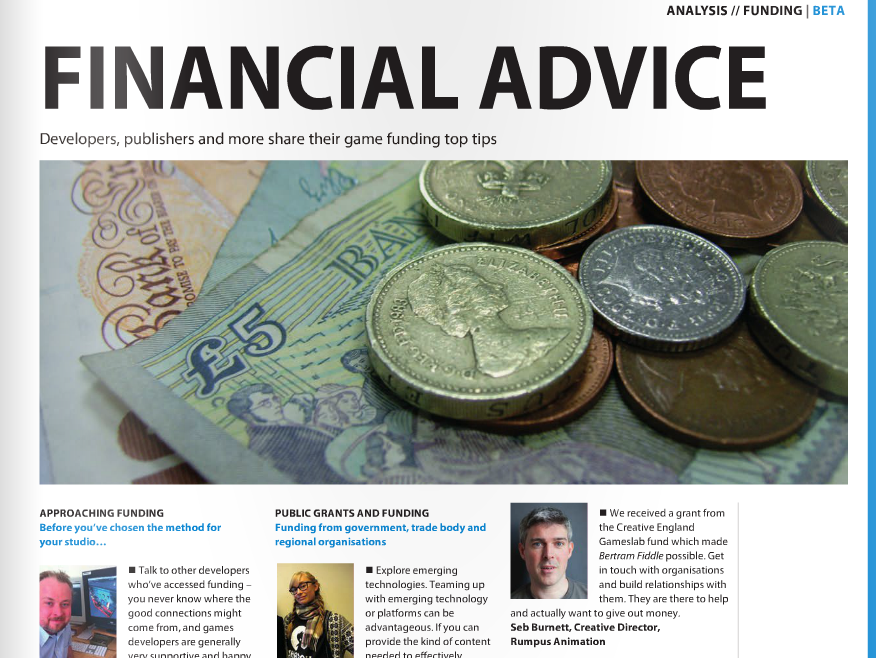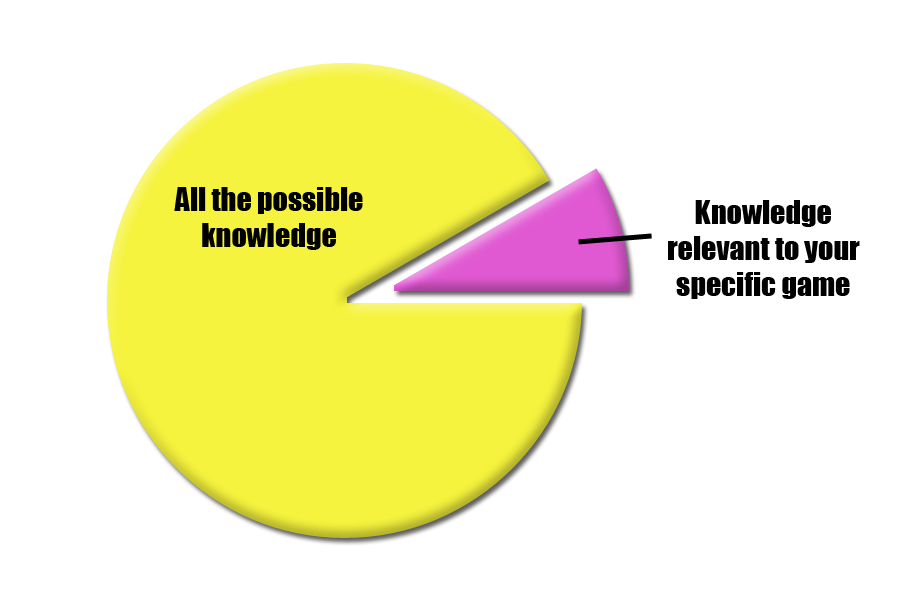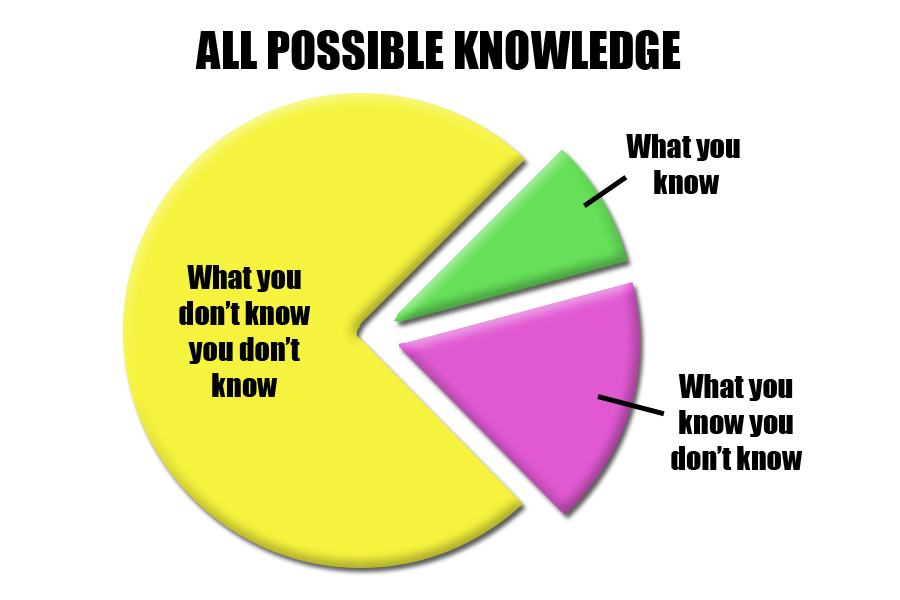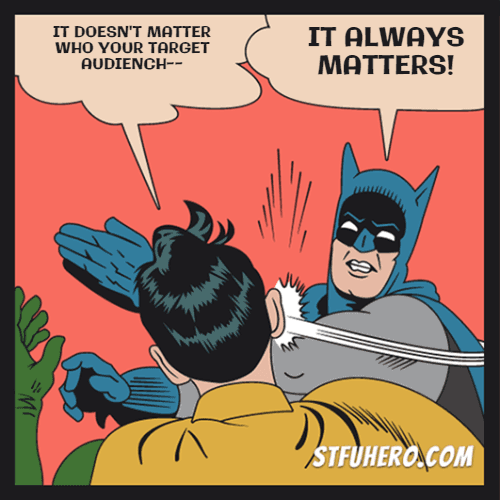Trending
Opinion: How will Project 2025 impact game developers?
The Heritage Foundation's manifesto for the possible next administration could do great harm to many, including large portions of the game development community.

Featured Blog | This community-written post highlights the best of what the game industry has to offer. Read more like it on the Game Developer Blogs or learn how to Submit Your Own Blog Post
Inspired by Develop Magazine’s article about how to finance an early-stage game company by Will Freeman, we wanted to write a longer post about funding, and share with you our personal experiences on work for hire.

Originally posted on the Shadow Puppeteer development blog.
We were honored to be asked by Develop Magazine’s Will Freeman to share some short tips on how to finance an early-stage game company for his article “Funding Your Game.”
If you have not yet read this article (page 14-15), we encourage you to do so as it includes funding advice and shared experiences from several talented and experienced game developers.
Inspired by this article, we wanted to write a longer post about funding, and share with you our personal experiences on work for hire.
Read more...

As stated in Develop’s article, one way to fund your company before your game is ready to be shipped, is by running a consulting business that leverages your game technology expertise to offer solutions to industries outside of gaming. You can use your resources and skills within other fields to earn money at the same time as making your product.
This does, however, pose some challenges, and therefore must be done with careful consideration. From what we have experienced, it is all too easy to stray away from your purpose and get stuck in a spiral that could ultimately harm your company and your product. You must be tactical, realize the risks and decide how to handle them. If you are not prepared to spend the time to execute correctly, do not attempt to go down this route.
Before we start, we feel it is important to be open: Sarepta studio is a company that does both game development and work for hire. It has always been an important part of our business strategy, and it is something we will continue to do. Sarepta has managed to build up a strong foundation for our company, making us successful. We value, honor and respect our clients and the work we do for them. We are also dedicated to creating our own engaging experiences, i.e., crafting tailored products toward the consumer market that reflect our values and culture.
Just because Sarepta has succeeded in balancing game development and work for hire, does not mean it was easy. Just because we wish to continue working this way does not mean it is not a constant challenge. That is why we want to share from our experiences. Even though we would do the same again, we do not wish to see others go blindly down this path.
The major threat to budding game developers, that we see, are common misconceptions created by assumptions or even shared by unknowing advisors. I.e., people who know a lot about general business, but know very little about the game development business.
There are three common misconceptions about taking on work for hire as means of funding your game development. Or, as people continue to phrase it: “Do something that’s profitable so you can do what you think is fun in the end.” The mindset that work for hire is bound to be profitable and game development is “fun,” but not a viable business, is completely wrong.
The major challenges we have seen are mainly based on the misconceptions that:
Taking on work for hire is an easy way to earn money quickly
Working on other projects will always help you develop your own product
It doesn’t matter who your target audience is
In many ways these misconceptions are tightly connected, but we will address each separately.
Game development is a long and hard process where you usually only get paid at the end...if you are lucky. Making other people’s products, however, is an easy way to get money in quickly. If you do work for hire you will be able to invoice your hours weekly or monthly, so it is a great safety-net to have as you develop your game. And just think about all the money you could earn by selling your services to large companies!
Yes, the market has a lot of potential for profit…that is why there are businesses specifically focused on targeting it.
 Some might not be so keen on sharing
Some might not be so keen on sharing
- Image found at dailymail
Striving to do work for hire for other companies will put you in direct competition with companies focused solely on those industries. The difference between these companies and yours is that their primary focus lies here. Your primary focus is your game.
If you want to be able to compete in a specific market, you will have to do a lot more than just half-assing it. You will need to build your market strategy, get to know your target audience, create a solid communication platform and have a relevant portfolio that can convince this market that you are specialized enough to do quality work.
You will also have to do...sales!
 Anything but that!
Anything but that!
We will not go into further detail on this point as it ties in with the other misconceptions. Just realize that working with clients is not an easy “get rich quick” scheme. It needs to be something you actually care about. Sarepta has managed because we started with a divided consulting branch that wished to work with businesses. So, it wasn’t a means, it was a goal.
A misconception many have is that “if you know how to use a tool in one field, you must be able to use it as efficiently in related field.” This is simply not true. Is it fair to assume that a carpenter who knows how to build a wooden boat, also knows how to build a wooden house?
Of course, there will be some related uses for, for instance, modelling and design tools in different fields. But don’t simply assume that one makes you qualified for the other.
When Sarepta began doing 3D visualization work for architects, we thought that this work would give our 3D artists a broader skillset and more experience. And it did, but in completely different and unrelated techniques that could not be used in our game.
 Same tools, different focus
Same tools, different focus
The techniques are so different from when you create still images rendered for use on websites or posters, verses real-time engines. It might seem very obvious, yet it is so easy to fool yourself, or to get fooled by other (well meaning) people to believe that doing this completely unrelated thing might actually help. At least you are learning, right? But what use is it if you are learning the wrong things?
 It really shouldn’t be that hard of a concept to grasp.
It really shouldn’t be that hard of a concept to grasp.
For a programmer, it might be tempting to reuse a system or approach that you have used while doing work-for-hire. However, if the system was made with fundamentally different goals, or was designed for a different environment, then you will likely be applying an otherwise valid solution to the wrong problem.
You could compare this to the conventional approach of building castles using stone.
“Everyone said I was daft to build a castle on a swamp, but I built it all the same... It sank into the swamp. So I built a second one. That sank into the swamp. So I built a third. That burned down, fell over, then sank into the swamp. But the fourth one stayed up.”
- Quote from Monty Python & the Holy Grail
In hindsight, given the time and money that was invested (using a Stone framework), it would’ve been smarter to have approached this problem with an appropriate solution (perhaps ‘Wood’).
Yet it is very tempting to reuse previous work and experience, since as humans we all suffer from cognitive bias, and one of those is the ‘sunk cost bias’, where it’s difficult for us to accept wasted expenditure - we want to avoid it, and this includes any time consumed by consulting work. However, it’s vital to recognise from a software or game production perspective, that you should not apply the wrong solution, since this will only cause you more issues and can be even more costly.
Yes you will likely gain ‘useful’ knowledge and experience from doing work-for-hire, but consider it may not be that relevant, and it might not save you as much time as you hope.

It might only be worth the risk if you can perfectly and consequently link your current game development with the consulting work. Otherwise, you will stretch your resources too thin and both your consulting and development work will suffer.
If you can find work that is perfectly relevant to the skills that you need to make your game, then you could do the R&D with less risk. There might be techniques you still need to master, systems that you could explore, or tools you want to look into through doing consulting work.
 Expand what you know, what you know that you don’t know, and decrease what you don’t know that you don’t know
Expand what you know, what you know that you don’t know, and decrease what you don’t know that you don’t know
However, if the packman of this pie chart is too big, then you will risk doing a bad job. Taking on a job that you do not have any skills to do is ill advised and downright unethical.

If you want to become successful in what you do, you need to always consider your target audience. And, most likely, you will end up having several of them when doing work for hire.
In creating entertainment games, odds are that you are targeting the consumer market (B2C). When you take on work for hire as a consulting company, you will most likely be targeting businesses (B2B). B2C and B2B are different markets with different marketing strategies and platforms. Many companies manage to work toward both, but it still demands more of you.
You will have to compete with others, so you need to build your market strategy, get to know the audience and create a solid communication platform. You will have to do this for both your games and your consulting business as you will encounter strong competition in both.
Your game is not just a product that needs to be made and shipped. The games you make (because you do actually want to make more than just one game) need to be a solid part of your business strategy. It is all too easy to focus on one great idea and completely forget the bigger picture: What kind of target audience should my games reach? What kind of brand will my company be? What kind of games will your audience be able to expect from you?
This is hard work and you will probably end up making mistakes, but if you don’t take this into consideration from the start, you may end up wasting several years on bad communication work.
Sarepta’s consulting division had a wide focus initially, but we realized that working with clients and convincing them to pay us what game development actually costs was difficult. We moved the business more toward visualization, 3D illustrations and 3D animations, with a specific focus on architectural design. The challenge then again became communication. We had to spend more time making sure that we communicated the right thing to the right people.
This goes back to misconception No. 2, where you really have to make sure that what you do is relevant. Clients want vendors who are specialized in their field. They want proof that you are worth their money. If you can do this, then you have a chance, but it will take time.
In our later years, we moved further away from pure visualization and closer to working on interactive products and games for clients. This is something we are able to do because we have been in the game (so to speak) longer and because we can afford to turn down the wrong type of projects. We still wish to target both the B2B and B2C markets, but we want to narrow our expertise so that we can continue to excel.
Don’t let yourself get pulled between different fields. You would not trust a chef to operate on your cat just because he knows how to use a knife. How could you expect someone to hire you to make their trailer just because you know how to make things move in 3D?
What we want you to take away here is this: Even though doing work for hire may seem like a viable way to earn money, it should not be viewed as simply an additional funding option.
You need to make a decision on how hard you will invest in this part of your business and if it is the right thing to do at all. If it is games you want to create, your time might be better spent on funding the game through the game.
If you want to work with creative and interactive media, meet new and interesting people and work together with other industries to explore the potential of game technology, then we say: Go for it!
In the end, it’s your goal and not just some half-assed attempt at trying to milk a cash cow.
Taking on work for hire is not an easy way to earn money quickly
Working on other projects will not always help you develop your own product
It does matter who your target audience is
So if you plan to go down this route make sure you:
Create a business strategy that consistently combines your consulting and game development
Find work that is relevant to the skills that you wish to enhance in making your game
Make sure your production pipeline is viable based on the products and services you will deliver
Be prepared to work with sales or find someone who can do this for you
Plan your marketing with consideration toward your target audiences, and create a solid communication platform
Realize that game development is a business that also needs a long term strategy
Find out who you are, what your strengths and what your goals are
Help us build the industry and show that even the smallest of us can do well through good business choices. Do not let people diminish our work. Do not diminish your own work. If your product is an expressive piece of art, it does not mean that it can’t also be a successful business.
If you can’t trust in the value of your own product, then why should anyone else?
We would like to thank Richard Barlow for his technical input
Read more about:
Featured BlogsYou May Also Like